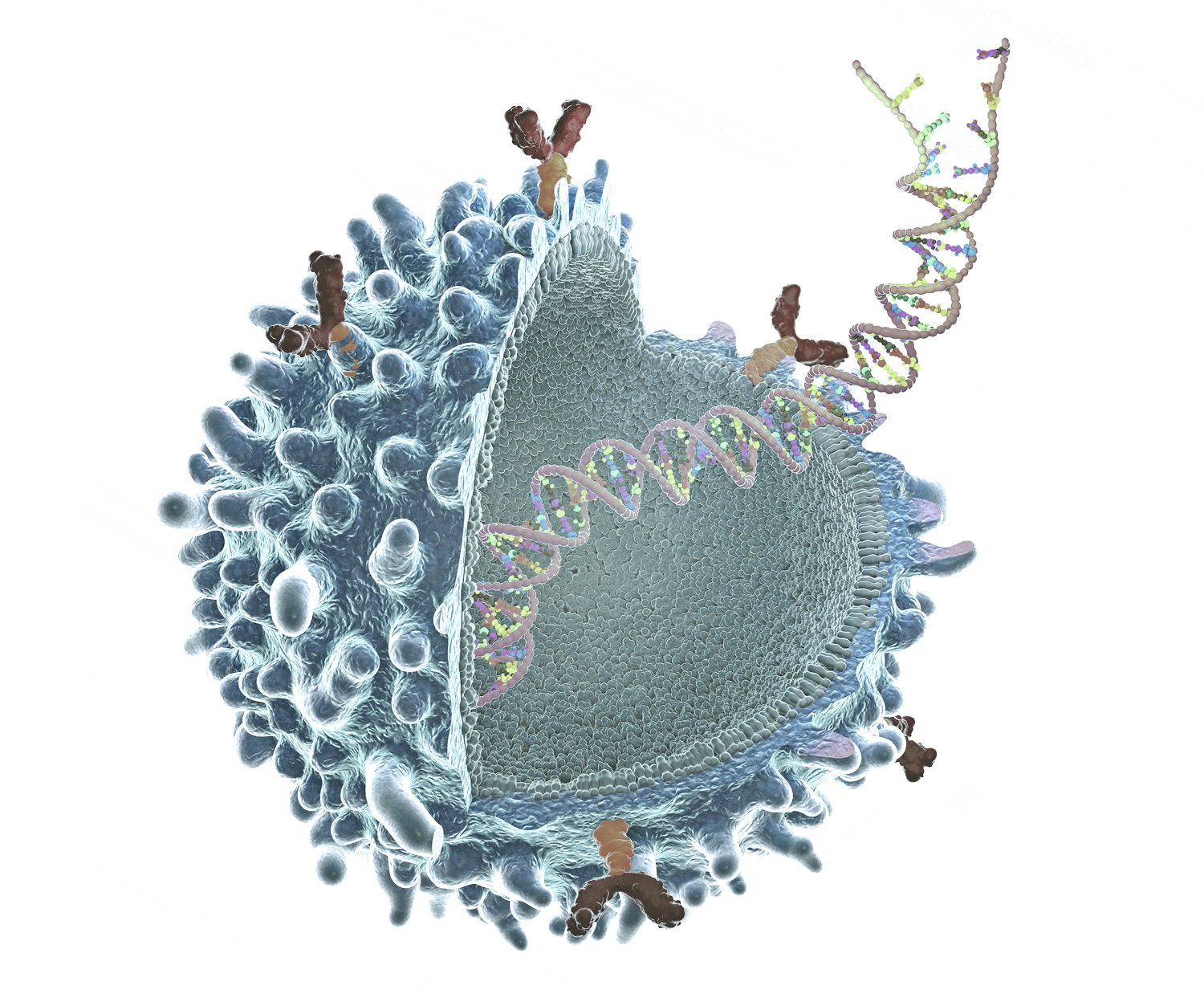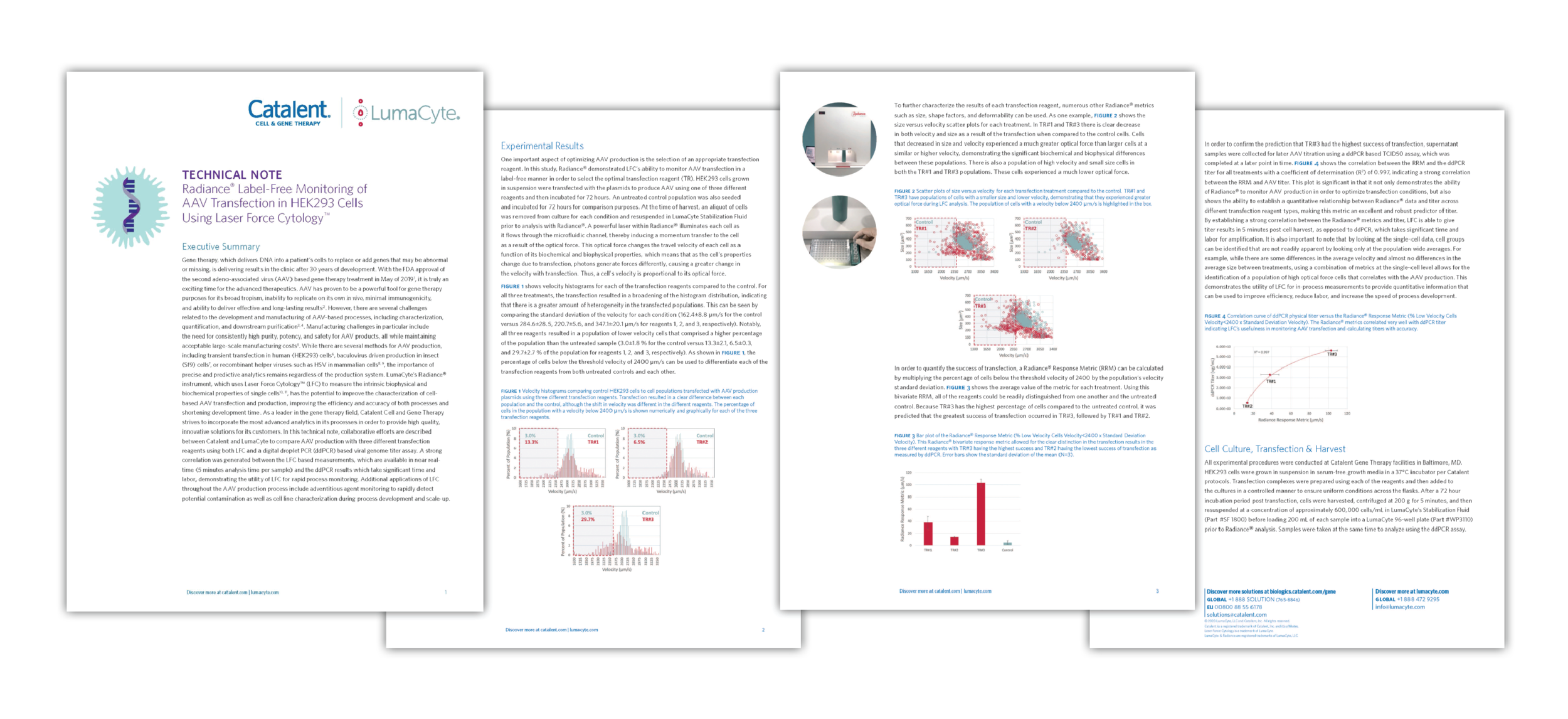AAV Transfection Efficiency of Different Transfection Reagents
Transfection in gene therapy is generally used for the production of the viral vector intended to deliver the gene of interest into the patient. Typically, this process begins with the insertion of plasmids into the production cells via chemical means of opening the membrane temporarily to insert the plasmids. Chemical transfection is the most common method as it is simple and inexpensive to use compared with more sophisticated methods such as electroporation or microinjection. Most AAV therapies use chemical transfection in human embryonic kidney HEK 293 cells for the production of the indented AAV virus. Selecting the optimal transfection reagent and culture conditions is an important step for R&D and process development to ensure an efficient production process.
Additional applications of LFC™ throughout the AAV production process include adventitious agent monitoring to rapidly detect potential contamination as well as cell line characterization during process development and scale-up.
Radiance® aids researchers in selecting optimal transfection reagents and conditions by offering rapid, label-free analysis, and highly precise cellular insights. This technology enables real-time evaluation of transfection efficiency, allowing researchers to make informed decisions and streamline the optimization process for enhanced gene therapy development.

Label-Free Monitoring of AAV Transfection in HEK293 Cells Using Laser Force Cytology™
In this tech note, collaborative efforts are described between Catalent and LumaCyte to compare AAV production with three different transfection reagents using both LFC™ and a digital droplet PCR (ddPCR) based viral genome titer assay. A strong correlation was generated between the LFC™ based measurements, which are available in real-time, and the ddPCR results, which take significant time and labor. This demonstrates the utility of LFC™ for rapid process monitoring of AAV transfection.



